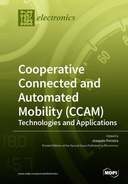Explore

Cooperative Connected and Automated Mobility (CCAM)
Joaquim Ferreira
2020
0 Ungluers have
Faved this Work
Login to Fave
Cooperative connected and automated mobility (CCAM) has the potential to reshape the transportation ecosystem in a revolutionary way. Transportation systems will be safer, more efficient and more comfortable. Cars are going to be the third living space, as passengers will have the freedom to use their car to live, work and travel. Despite the massive effort devoted, both by academia and industry, to developing connected and automated vehicles, there are still many issues to be addressed, including not only scientific and technological, but also regulatory and political issues. This book, mostly centered on the scientific and technological aspects of CCAMs, features seven articles highlighting recent advances of the state of the art in different CCAM technologies. Two papers address vehicular platooning, a key application for day-1 automated driving, other presents a scheme to improve the resource utilization of vehicular networks, while another paper addresses critical train communications, proposing an architecture based on 5G, SDN and MPTCP to provide path diversity and end-to-end redundancy. One paper describes the status of roadside deployment activities and analyzes the policies and practices of cooperative driving in the European Union. Finally, two review papers, one on congestion control techniques for VANETs and the other on fault tolerance techniques for vehicular networks, conclude the book.
This book is included in DOAB.
Why read this book? Have your say.
You must be logged in to comment.

